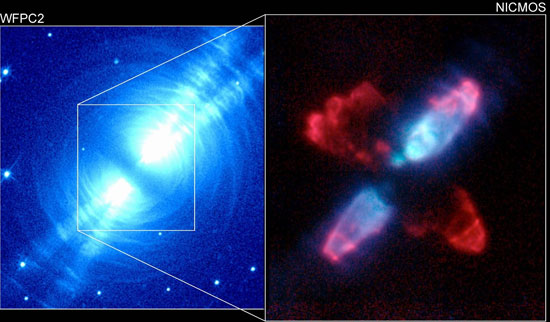3 scientific discoveries in 1 week of March 2011
Finding sulfur in the building blocks of life, new techniques that show fingerprints and blood freezing techniques for longer storage, are news this week.

Image for illustrative purposes. (Internet source)
1. A new analysis of the remaining specimens from a famous experiment that was carried out more than 50 years ago may shed light on the origin of life.
In the 1950s, chemists succeeded in using electricity to manipulate primitive compounds, to make amino acids, or building blocks of proteins. Reanalysis of these amino acids, by using modern techniques, the final results show the presence of sulfur in these compounds, the results of this study are published online on the academy. National science, issued March 21, 2011. Compared to the distribution of amino acids found in some meteorites, hydrogen sulfide gas plays an important role in amino acid formation in the system. Initial solar energy. The study also provides accurate information on the chemical composition of volcanic smoke clouds, through the famous simulation experiment of scientist Miller-Urey, according to Rachel Ehrenberg.
2. A piece of plastic fiber separated from nanofibers and a bit of hot air , will make it possible to see hidden fingerprints, which appear in seconds, simplify a previously used job Use different chemicals and techniques using reliable spectrophotometers.
Researchers, working at Nanjing Technical University, China, made thin plastic fibers, separated from fluorescein polyurethane resin, a dye used in environmental and diagnostic testing. medical guess. Gently impacting the surfaces of objects bearing fingerprints to break the link between plastic fibers, dyes, and hot air, will result in a bright red print within five seconds, the result of this study published by researchers in Angewandte Chemie magazine, published March 17, 2011. Tests on quartz, stainless steel, polypropylene, marble and wood surfaces all show details of fingerprints in daylight, according to Rachel Ehrenberg.
3. A new cooling way to store and help prolong the shelf life of frozen blood in blood banks.
As a rule, fresh blood banks must be used for a period of 40 days, and there are about 1.2 million blood units removed in the United States in 2006, due to the expiration of the expiry date. Blood can be frozen for longer storage, but this often causes significant damage to the number of cells. Now, researchers at Harvard Medical School and MIT have developed an automated technique as a solution, to spray small amounts of glycerol onto the surface of blood cells in an icy, created environment. produces a frozen state of red blood cells, with one or more blood cells inside a glycerol drug jacket. A small amount of blood cells still suffer, while a large volume of blood suspends activation and is well preserved, the results of this study are published by scientists in PLoS One. , issued March 11, 2011, according to Janet Raloff.
- 10 outstanding scientific discoveries in 2008
- 7 great scientific discoveries thanks to dreams
- 5 most outstanding scientific discoveries in 2013
- First organized Science Communication Week
- Summary of good scientific news during the week from 09-14 March 2015
- The accidental scientific discovery possible
- New discoveries about the human body (Part 2)
- 3 scientific discoveries about people make you surprised
- Synthesis of scientific news or week 3/1
- Summary of the best news from March 1, 2017
- Sex and interesting scientific discoveries
- The most crazy 'scientific' discoveries in 2017
 Vietnam 5th Asian champion on fuel-efficient vehicles
Vietnam 5th Asian champion on fuel-efficient vehicles We can read all NASA studies completely free of charge
We can read all NASA studies completely free of charge Singer and songwriter Bob Dylan won the 2016 Nobel Prize for Literature
Singer and songwriter Bob Dylan won the 2016 Nobel Prize for Literature Scientific revolution in Asia
Scientific revolution in Asia